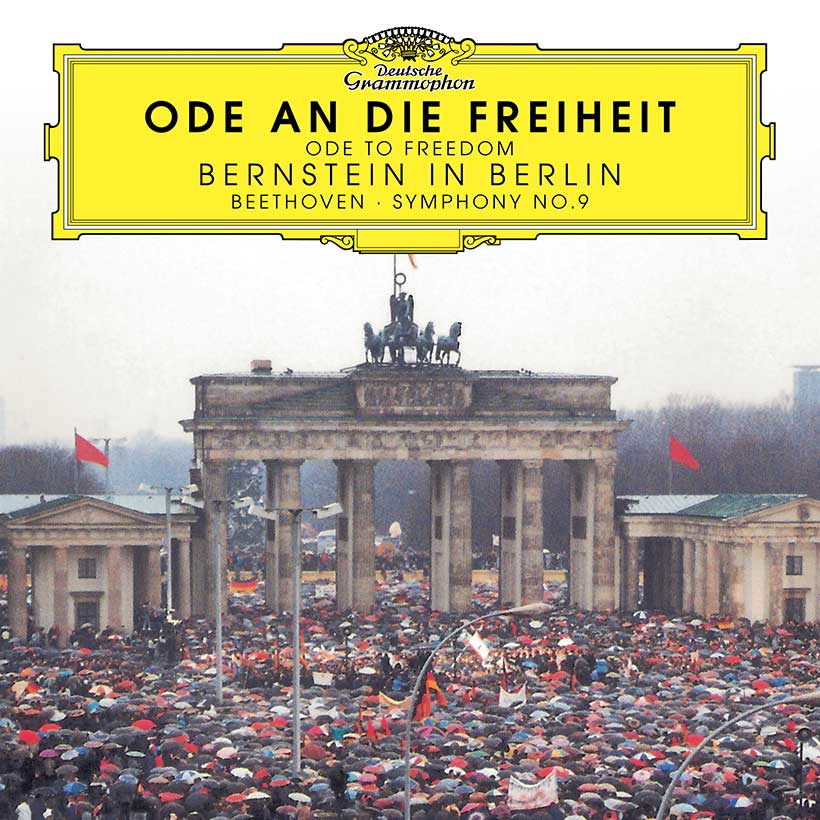Ode to Joy. A familiar poem turned movement with a tune placed in the head of every musician, particularly those who started at a young age. Whether it be piano, violin or even recorder, the composition is unmistakable. Ode to Joy was originally composed by Ludwig van Beethoven in 1824. Right off the bat his fourth (and final) movement in his Ninth Symphony gained popularity, but really took off in the mid 1900’s.
A particular time the piece was topical was toward the end 1989, re-imagined by conductor Leonard Bernstein and his biographer/producer Humphrey Burton.
It was decided that they would hold a public concert on Christmas Day in 1989, at the Gendarmenmarkt in Berlin. The building used to hold a royal theater, but after being rebuilt from the war it was turned into a concert hall.
The day was quite significant for it would be the first time East and West Berliners would spend Christmas with each other. For earlier that year, citizens on both sides had begun the project of demolishing the almost three decade old wall.
The purpose of Ode to Freedom was fairly self explained. Bernstein wished to celebrate the fall of the Berlin Wall and to recognize the beauty and harmony that was on the horizon.
They let the movement speak for itself, only changing the word “Freude” (Joy), to “Freiheit” (Freedom). A small change but with a significant message. Bernstein had it so that the musician and choir members were from all around the world to acknowledge the start of it all. East and West Germany as well as France, Great Britain, the Soviet Union and the U.S.
The concert called for a time of celebration after years, almost decades, spent separated and at war.
Composer and pianist Craig Urquhart said, “No words can describe the reverent energy, happiness and grave responsibility that was felt in the hall. Even as I write my eyes well up with tears, for we all felt a great divide had been healed”.
Here's the link to a video if you'd like to see part of it (Flute and French Horn action included):
https://www.youtube.com/watch?v=l46GNducsPk
Sources:
https://www.udiscovermusic.com/classical-news/bernstein-beethoven-ode-to-freedom/
https://leonardbernstein.com/about/conductor/historic-concerts/berlin-wall-concert-1989 https://radio.wosu.org/post/leonard-bernstein-marked-fall-berlin-wall-ode-freedom
https://study.com/academy/answer/is-ode-to-joy-a-christmas-song.html
https://www.liveabout.com/beethovens-ode-to-joy-lyrics-history-724410




I found it really interesting how Bernstein adapted Beethoven’s 9th Symphony to fit the excitement everyone felt after the liberation of Germany. The Christmas concert not only reached thousands of Germans, it also attracted over 100 million viewers worldwide, all coming together to celebrate a new start. Composer Graig Urquhart, Bernstein’s personal assistant, recalled the moments after the concerts and receptions where they drove down to the western side of the wall, borrowed a hammer from a young boy, and took turns tearing down the wall. To Urquhart, Bernstein’s breaking of the Berlin wall symbolized the dismantling of all the metaphorical walls “he’d so worked so hard to dismantle in the hearts and minds of man” throughout his lifetime.
ReplyDeletehttps://www.udiscovermusic.com/classical-news/bernstein-beethoven-ode-to-freedom/